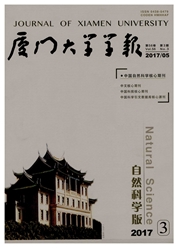

 中文摘要:
中文摘要:
选取[10~35°N,110~165°E]的西北太平洋海域,利用2002年7月~2005年12月Argo浮标数据对AVHRR/MODIS/TMI SST的daily(升轨)数据进行验证.结果表明:AVHRR/MODIS/TMI daily SST与Argo浮标5~6 m层温度总体的均方差rms在0.6~0.9℃,平均偏差bias在-0.2~0.2℃,平均绝对偏差bias_abs在0.3~0.7℃.这与三传感器全球范围的SST反演目标相当,说明在本区域SST反演不存在显著偏差.各遥感SST与浮标温度的差异存在季节变化,夏季偏高,很可能与夏季垂直混合较弱,比对采用的实测水温与海表温度差距较大有关.在3种遥感SST中,TMISST偏离实测值的程度最高,且偏离范围较大.作者认为这与该区域黑潮经过,产生诸多涡旋和锋面,SST时空变化剧烈而TMI空间分辨率较低有关.本研究将为此西北太平洋海域的多源SST融合提供一个比较可靠的依据.
 英文摘要:
英文摘要:
We used Argo data during the period of July 2002 to December 2005 to validate the consistency of AVHRR/MODIS/ TMI SST(Sea Surface Temperature) at daily scale in the region of E10-35°N, 110 - 165°E]. The statistic showed that between AVHRR/MODIS/ TMI SST and Argo temperature at 5-6 m depth,their rms ranged from 0.6-0.9℃ and the bias was -0.2- 0.2℃ It was consistent with the accuracy of SST retrieval of 0. 6 - 0. 7℃ on global scale. However the differences between AVHRR/MODIS/TMI SST and Argo temperature varied in different seasons. TMI showed the most significant deviation from Argo data,which was probably resulted from its low resolution and the dynamic feature of SST in this specific region which had abundant eddies and fronts induced by the passage of Kuroshio. Further efforts for remote sensing SST merging in theis region would be possible based on the result we presented.
 同期刊论文项目
同期刊论文项目
 同项目期刊论文
同项目期刊论文
 期刊信息
期刊信息
